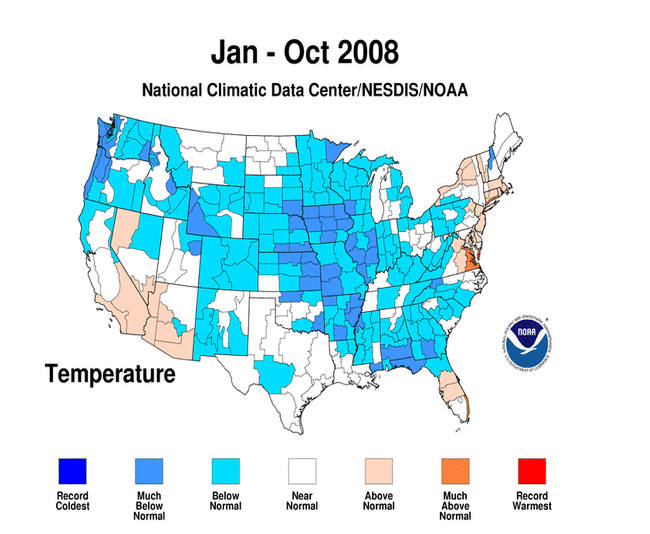Old Rocks
Diamond Member
Satellites Confirm Half-Century of West Antarctic Warming
Jan. 21, 2009
The Antarctic Peninsula juts into the Southern Ocean, reaching farther north than any other part of the continent. The southernmost reach of global warming was believed to be limited to this narrow strip of land, while the rest of the continent was presumed to be cooling or stable.
Not so, according to a new analysis involving NASA data. In fact, the study has confirmed a trend suspected by some climate scientists.
"Everyone knows it has been warming on the Antarctic Peninsula, where there are lots of weather stations collecting data," said Eric Steig, a climate researcher at the University of Washington in Seattle, and lead author of the study. "Our analysis told us that it is also warming in West Antarctica."
Figure at right: Red represents areas where temperatures have increased the most during the last 50 years, particularly in West Antarctica, while dark blue represents areas with a lesser degree of warming. Temperature changes are measured in degrees Celsius. Credit: NASA/GSFC Scientific Visualization Studio > Print resolution image
The finding is the result of a novel combination of historical temperature data from ground-based weather stations and more recent data from satellites. Steig and colleagues used data from each record to fill in gaps in the other and to reconstruct a 50-year history of surface temperatures across Antarctica.
NASA GISS: Research News: Satellites Confirm Half-Century of West Antarctic Warming
Jan. 21, 2009
The Antarctic Peninsula juts into the Southern Ocean, reaching farther north than any other part of the continent. The southernmost reach of global warming was believed to be limited to this narrow strip of land, while the rest of the continent was presumed to be cooling or stable.
Not so, according to a new analysis involving NASA data. In fact, the study has confirmed a trend suspected by some climate scientists.
"Everyone knows it has been warming on the Antarctic Peninsula, where there are lots of weather stations collecting data," said Eric Steig, a climate researcher at the University of Washington in Seattle, and lead author of the study. "Our analysis told us that it is also warming in West Antarctica."
Figure at right: Red represents areas where temperatures have increased the most during the last 50 years, particularly in West Antarctica, while dark blue represents areas with a lesser degree of warming. Temperature changes are measured in degrees Celsius. Credit: NASA/GSFC Scientific Visualization Studio > Print resolution image
The finding is the result of a novel combination of historical temperature data from ground-based weather stations and more recent data from satellites. Steig and colleagues used data from each record to fill in gaps in the other and to reconstruct a 50-year history of surface temperatures across Antarctica.
NASA GISS: Research News: Satellites Confirm Half-Century of West Antarctic Warming




